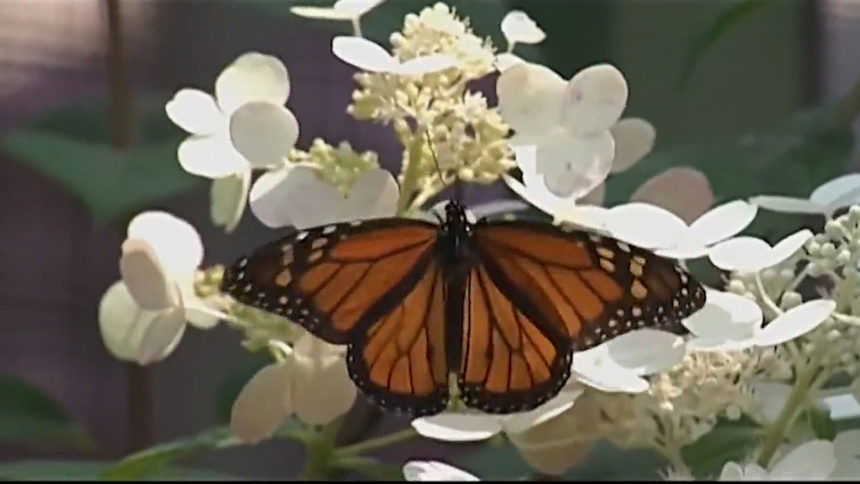Monarch butterflies critically low, but more flock to Pismo Beach

PISMO BEACH, Calif. - There are twice as many monarch butterflies in Pismo Beach this year, but the overall count of Western monarchs remains the same.
Monarch butterflies west of the rockies migrate every winter to California.
California State Park officials said you can see them anywhere from San Francisco to Southern California, and new research shows that some are even going to Mexico.
Thousands of visitors a day flock to the pismo state beach butterfly grove.
Visitor Richard Buchen visits a couple times a year. "There's just something about butterflies. In ancient greek, the word psyche means both soul and butterfly," he said.
Today there are one thousand monarchs in the grove. At its peak this year, there were seven thousand. That's double of last year's count.
The number of monarchs here is only 20 percent of the count six years ago, which was 34,000. It's 3 percent of the count thirty years ago, which was 230,000.
The Western monarch population tends to come to Pismo Beach around October or November.
They used to leave around March, but officials said they've been leaving closer to February.
State Parks officials said one of the factors could be climate change.
"Another major issue is loss of breeding habitat," said Mallory Claassen, a California State Parks ranger. "And when I say breeding habitat, I mean milkweed."
As for why a quarter of the 29,000 western monarchs chose to come here, State Parks isn't sure. They said it could have something to do with both preparation and preservation.
"We're so fortunate that this overwintering site is on state parks properties," said Claassen. "So it's managed and protected and we're doing everything we can to restore the grove and look towards the long term."
State Parks says there is no way to predict how many will return next year.
If you want to help increase the monarch population, State Parks said the best thing you can do is make your yard a habitat for them.
Plant milkweed and flowering plants. Those provide nectar for the monarchs.
